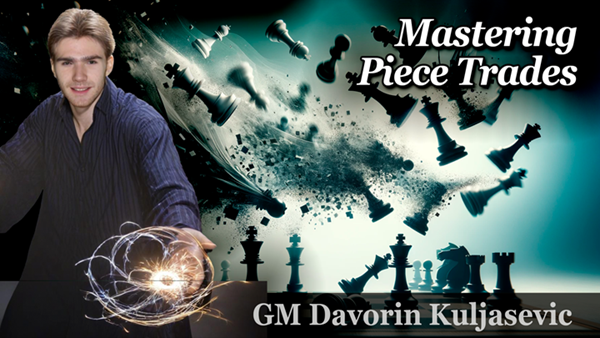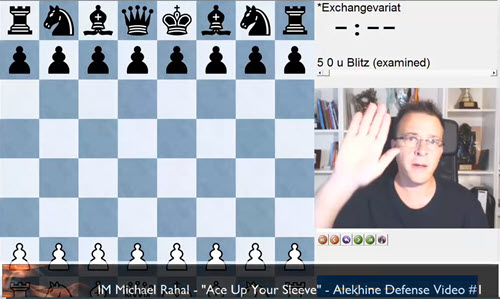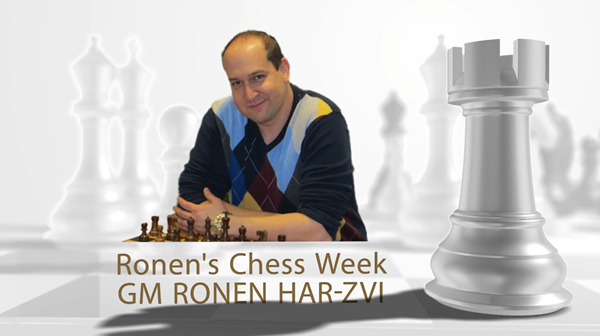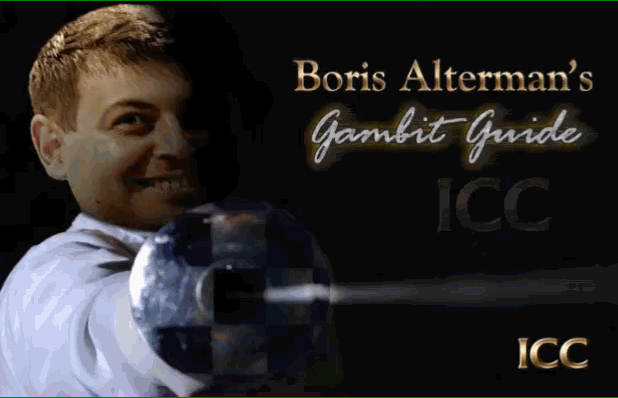Opening: :
Player(s):
Video 10: Transition into endgame – part 2
In the second part of our examination of the transition into the endgame, we will look at the factors that speak against such decisions. The tendency to simplify the position is strong among inexperienced chess players and amateurs, so it’s crucial to understand why such decisions could be wrong. In most cases, this is because:
Instead, keeping tension in the position, which usually means we go for the more complex middlegame or endgame instead of the ‘simpler’ endgame, can be a better policy. More pieces on the board means more risk, but also more chances for us. A common misconception is that by simplifying the position, our play becomes simpler. But this notion is often wrong. If you choose the wrong endgame, you can suffer much more than in the middlegame because fewer pieces mean you have fewer chances to create counterplay against the opponent’s plan.
This is a 5 minute preview.
Log in to watch the full show or click one of the links below.
Page 1 of 91 pages 1 2 3 > Last ›

Added on 04.24.2024
GM Davorin Kuljasevic - Mastering Piece Trades - Video 10

Added on 04.22.2024
B00 IM Rahal Ace up Your Sleeve - Nimzowitsch Defense - Part 1

Added on 04.19.2024
E46, A09 GM Miguel Illescas - Top 10 Checkmate Patterns - Part 3

Added on 04.17.2024
GM Davorin Kuljasevic - Mastering Piece Trades - Video 9

Added on 04.15.2024
C00 IM Rahal Ace up Your Sleeve - French Wing Gambit - Part 2

Added on 04.12.2024
GM Miguel Illescas - Top 10 Checkmate Patterns - Part 2

Added on 04.10.2024
GM Davorin Kuljasevic - Mastering Piece Trades - Video 8

Added on 04.08.2024
C00 IM Rahal Ace up Your Sleeve - French Wing Gambit - Part 1

Added on 04.05.2024
A80, A00, C20 GM Miguel Illescas - Top 10 Checkmate Patterns - Part 1

Added on 04.03.2024
GM Davorin Kuljasevic - Mastering Piece Trades - Video 7

Added on 04.01.2024
B03 IM Rahal Ace up Your Sleeve - Alekhine Exchange Variation - Part 2

Added on 03.29.2024
A21 GM Alex Yermolinsky - The Timman-Anand Variation - Part 5

Added on 03.27.2024
GM Davorin Kuljasevic - Mastering Piece Trades - Video 6

Added on 03.25.2024
B03 IM Rahal Ace up Your Sleeve - Alekhine Exchange Variation - Part 1

Added on 03.22.2024
A21 GM Alex Yermolinsky - The Timman-Anand Variation - Part 4

Added on 03.20.2024
GM Davorin Kuljasevic - Mastering Piece Trades - Video 5

Added on 03.15.2024
A21 GM Alex Yermolinsky - The Timman-Anand Variation - Part 3

Added on 03.13.2024
GM Davorin Kuljasevic - Mastering Piece Trades - Video 4

Added on 03.11.2024
E33, C60, A14, B90 Ronen’s Chess week - Episode 44

Added on 03.08.2024
A21 GM Alex Yermolinsky - The Timman-Anand Variation - Part 2

Added on 03.06.2024
GM Davorin Kuljasevic - Mastering Piece Trades - Video 3

Added on 03.04.2024
E36, A45, E71, C54, A29 Ronen’s Chess week - Episode 43

Added on 03.01.2024
A21 GM Alex Yermolinsky - the timman-Anand Variation - Part 1

Added on 02.28.2024
GM Davorin Kuljasevic - Mastering Piece Trades - Video 2

Added on 02.26.2024
C47, D30, D32 Ronen’s Chess week - Episode 42

Added on 02.23.2024
A21 GM Alex Yermolinsky - Double Pawns in the English - Part 8

Added on 02.21.2024
GM Davorin Kuljasevic - Mastering Piece Trades - Video 1

Added on 02.19.2024
Ronen’s Chess week - Episode 41

Added on 02.16.2024
A21, A25 GM Alex Yermolinsky - Double Pawns in the English - Part 7

Added on 02.14.2024
C57 GM Boris Alterman’s Gambit Guide: Traxler counter-attack #3

Added on 02.12.2024
Ronen’s Chess week - Episode 40

Added on 02.09.2024
A29 GM Alex Yermolinsky - Double Pawns in the English - Part 6

Added on 02.08.2024
C57 GM Boris Alterman’s Gambit Guide: Traxler counter-attack #2

Added on 02.05.2024
B04, D12, D77, C24, E11, B90, C54 Ronen’s Chess week - Episode 39

Added on 02.02.2024
A29 GM Alex Yermolinsky - Double Pawns in the English - Part 5

Added on 01.31.2024
C57 GM Boris Alterman’s Gambit Guide: Traxler counter-attack #1

Added on 01.29.2024
E51, D05, A13 Ronen’s Chess week - Episode 38

Added on 01.26.2024
A29 GM Alex Yermolinsky - Double Pawns in the English - Part 4

Added on 01.24.2024
C57 GM Boris Alterman’s Gambit Guide: Fried Liver Attack - Part 2

Added on 01.22.2024
C01, B90, D40, B12 Ronen’s Chess week - Episode 37

Added on 01.19.2024
A29 GM Alex Yermolinsky - Double Pawns in the English - Part 3

Added on 01.17.2024
C57 GM Boris Alterman’s Gambit Guide: Fried Liver Attack - Part 1

Added on 01.15.2024
C00, E06, C67, C13 Ronen’s Chess week - Episode 36

Added on 01.12.2024
A17 GM Alex Yermolinsky - Double Pawns in the English - Part 2

Added on 01.10.2024
Budapest defense declined GM Boris Alterman’s Gambit Guide: Budapest Gambit - Part 3

Added on 01.08.2024
E11, E21, E62, C45, D46, C50, C79 Ronen’s Chess week - Episode 35

Added on 01.05.2024
A28 GM Alex Yermolinsky - Double Pawns in the English - Part 1

Added on 01.03.2024
A51 GM Boris Alterman’s Gambit Guide: Budapest Gambit - Part 2